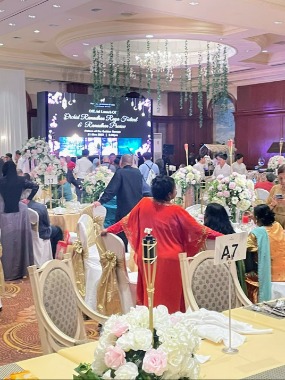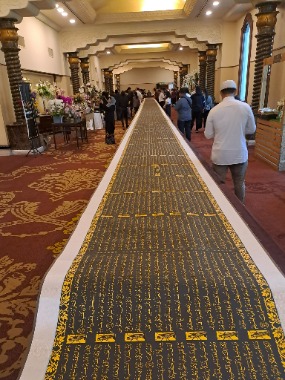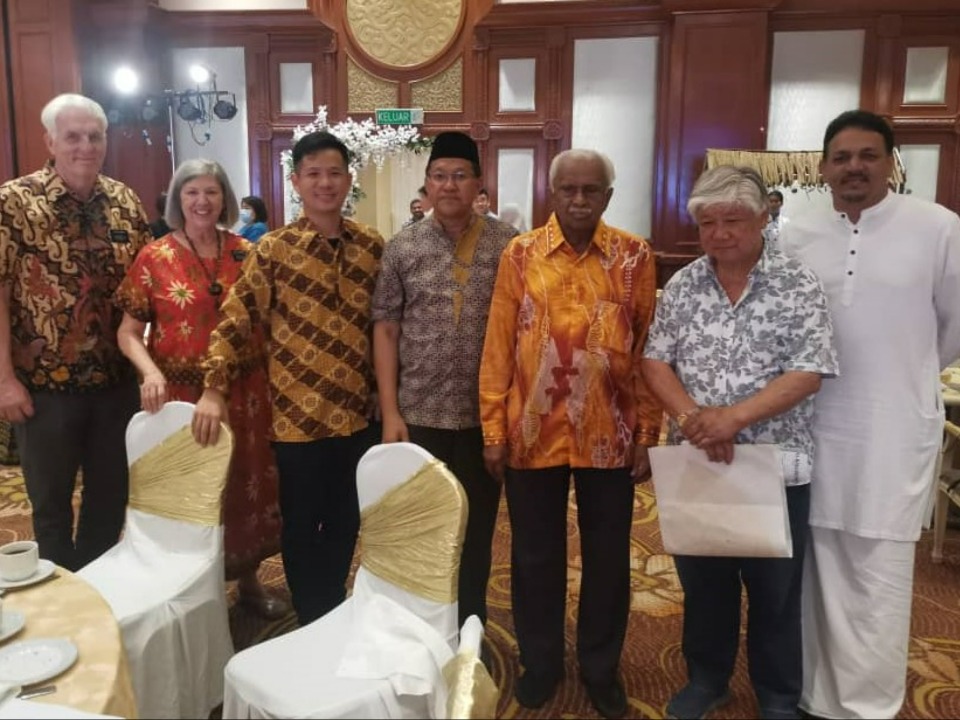Untuk membaca ini dalam bahasa Melayu, sila klik di sini.
(For Non-Muslim Use Only)
“We honor and respect sincere souls from all religions, no matter where or when they lived, who have loved God... We lift our voices in gratitude for their selflessness and courage. We embrace them as brothers and sisters, children of our Heavenly Father.”
President Dieter F. Uchtdorf in April 2008 general conference
This spirit of unity, understanding, and brotherhood was demonstrated in Kuala Lumpur, Malaysia at the Meaning of Ramadhan event which was held on March 21, 2023, two days before the beginning of the Ramadhan month when Muslims around the world fast during daylight hours. The event, held at the Palace of the Golden Horses in Kuala Lumpur, was attended by representatives of many different religions, including The Church of Jesus Christ of Latter-day Saints. The purpose of this event was to foster a better understanding of Ramadhan in the community and what it means to those who observe the fast and other Islamic practices during this important time. Participants were pleased to hear from Muslim speakers and others who expounded on the meaning of Ramadhan and the importance of unity and understanding amid the diverse religious and cultural population of Malaysia.

IMG_3652my.jpg
Church members participate in the "Meaning of Ramadhan" interfaith event held on 21 March, 2023 at the Palace of the Golden Horses in Kuala Lumpur, Malaysia.© 2023 by Intellectual Reserve, Inc. All rights reserved.Dr. Amir Fahid Isahak, president of the interfaith organization, INSaF (Interfaith Spiritual Fellowship), spoke about the spiritual purposes of fasting during Ramadhan, “The real purpose of Ramadhan fasting includes experiencing the hunger of the poor so that we may be reminded of their suffering, and their need for our care and charity.” He explained further, “The proper way to fast, as practiced by the Prophet Muhammad (peace be upon him), is to have a small meal for the sahur or pre-dawn meal before starting the fast, and to break the fast at sunset also with a small meal.”
He contrasted this practice with the current practices in Malaysia of feasting after the fast which “is not a culture that existed before Islam was embraced by the local Malays, or brought in by the Arab and Indian Muslims who migrated here, but is something that gradually evolved within the local communities over the last few decades.” Dr. Amir noted however that there are redeeming qualities associated with the Ramadhan buffets and bazaars that have become a part of the culture in Malaysia, “There are some positive aspects of this Ramadhan food festival... Firstly, usually family, friends and communities are gathered for the iftar feasts. Islam is a community-religion and anything that fosters good relations among the community is encouraged. Whether it is at home, restaurant, hotel or mosque, these gatherings enable reconnecting, forgiving and wishing good to the others present. Moreso if the poor or orphans are invited, or if the feasts are held at charity homes or orphanages.”
Tan Sri Lee Kim Yew, founder of Cheng Ho Multicultural Education, spoke about the importance of unity and compared multiculturalism to a multicolored painting. “A single-colored painting may appear dull. A painting with multicolor will become a good piece of art. Just like Malaysia is a multiracial, multicultural, and beautiful country with various ethnicities living in harmony.”

Guests were invited to view the unveiling and unscrolling of the longest Al’Quran in the world. This scroll is 208 meters long by 1.15 meters wide and was three years in the making. It was completed here in Malaysia by 70 artisans who cut the letters in black and gold paper. The scroll will remain on display at the Palace of the Golden Horses throughout the month of Ramadhan.
Members of the INSaF interfaith group, including Elder and Sister Lambson who were visiting from Jakarta, Indonesia, were in attendance at the event. Elder Lambson expressed his appreciation for the event, saying that he and his wife had learned a lot about how and why their Muslim friends observe Ramadhan and had a renewed appreciation for fasting, which is also an important part of their religious practice as members of the Church of Jesus Christ of Latter-day Saints.
